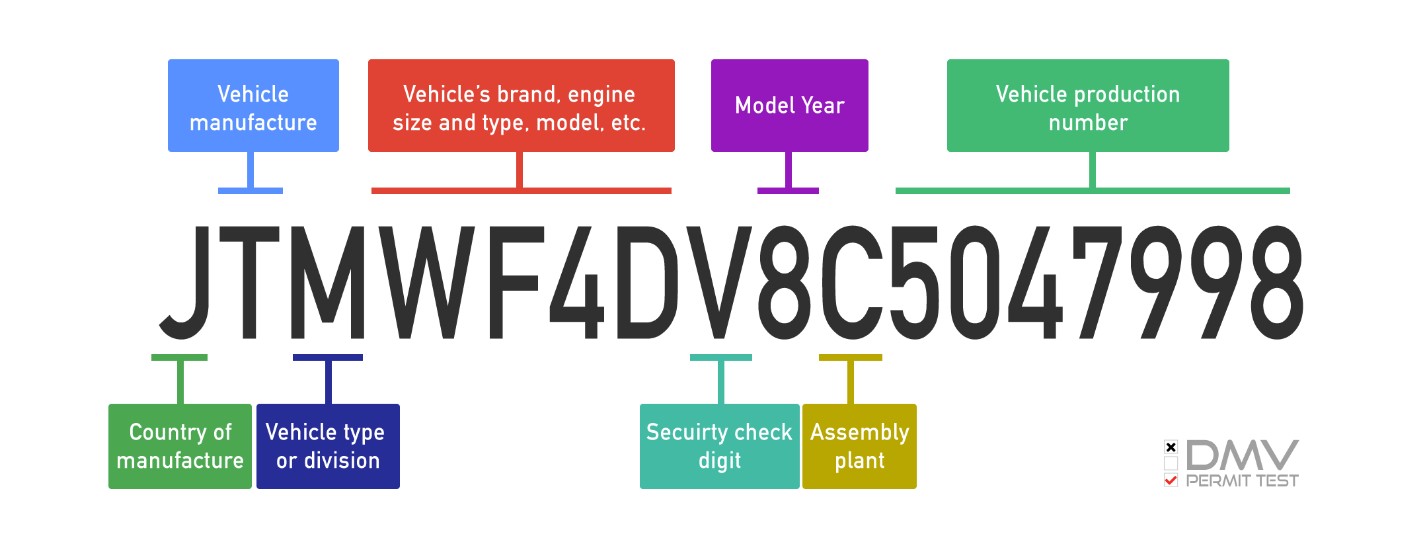What is a VIN number?
A Vehicle Identification Number (VIN) is a unique 17-digit alphanumeric code that is assigned to every motor vehicle at the time of manufacture. Its primary function is to serve as the vehicle’s fingerprint and to identify and track a specific vehicle throughout its lifespan. The VIN provides critical information about the vehicle, including the make, model, year, engine type, and country of origin. Additionally, it includes details such as the manufacturer code, vehicle features, and production number. The VIN is also utilized to track the vehicle’s history, including any accidents, thefts, or damages reported to the National Highway Traffic Safety Administration (NHTSA). As a result, the VIN is an essential piece of information for vehicle owners, buyers, and sellers. It ensures that the vehicle is accurately identified and facilitates easy access to vital information about the vehicle’s past.

How to Find the VIN
Where can the VIN be found on a car?
The Vehicle Identification Number (VIN) on a car can usually be found in various locations depending on the make and model of the vehicle. The most common places to locate the VIN include:
On a Car:
- On the dashboard, typically on the driver’s side of the vehicle and visible through the windshield (most common)
- On the driver’s side door jamb, usually found on a sticker or metal plate
- On the vehicle’s registration or insurance documents
- On the engine block or transmission
- On the vehicle frame, under the hood, or on the suspension components

It’s important to note that the VIN is stamped into into the metal chassis of the car. Therefore, it will not rub off or wear away like a sticker, and will stay with that vehicle for life. It is always recommended to double-check the VIN in multiple locations, especially when purchasing a used car, to ensure that the VIN matches on all the documents and the car itself.
Other places (not in the vehicle):
A Vehicle Identification Number (VIN) can typically be found in several locations that are not on the vehicle itself, including:
- On the vehicle’s registration and title documents: the VIN will be listed on the vehicle’s registration and title documents. This is the most common way to find the VIN for a vehicle that’s not readily accessible.
- On the vehicle’s insurance policy: the VIN will also be listed on the vehicle’s insurance policy.
- On the vehicle’s service records: many auto repair shops and dealerships will also have the VIN on file if the vehicle has been serviced at their location.
- On the vehicle’s loan/lease documents: if the vehicle is financed or leased, the VIN will be listed on the loan or lease documents.
- On the vehicle’s warranty or recall documents: if the vehicle is still under warranty or has been recalled, the VIN will be listed on the warranty or recall documents.
How long is a VIN number?
A Vehicle Identification Number (VIN) is a unique 17-digit code assigned to every manufactured vehicle. The VIN is a combination of letters and numbers that adhere to a standardized format established by the International Organization for Standardization (ISO) in 1981. The standard VIN format comprises 17 characters, divided into three sections:
- The first three characters of a VIN, also known as the “World Manufacturer Identifier” (WMI), identify the vehicle’s manufacturer and the country or geographical area where it was produced.
- The next six characters, also known as the “Vehicle Attributes” (VA), provide details about the vehicle, such as the model, body style, engine type, and restraint system.
- The last eight characters, also known as the “Vehicle Identifier Section” (VIS), provide specific information about the vehicle, including the production number and check digit.
What do all the characters in your vehicle’s VIN stand for?
Each character in a Vehicle Identification Number (VIN) has a specific meaning and represents specific information about the vehicle. Here is a breakdown of the 17 characters in a VIN and what they stand for:

- The first character identifies the country or geographical area where the vehicle was manufactured.
- The second character identifies the manufacturer of the vehicle.
- The third character identifies the type or manufacturing division.
- The fourth through eighth characters provide information about the vehicle’s model, body style, engine type, and restraint system.
- The ninth character is a check digit used to verify the accuracy of the VIN.
- The tenth character identifies the model year of the vehicle
- The eleventh character identifies the plant where the vehicle was manufactured.
- The twelfth through seventeenth characters provide information about the specific vehicle, such as the production number.
It is worth noting that not all information about a vehicle is included in the VIN. For example, details such as the car’s color, options, or equipment are not typically included. Therefore, it is always advisable to obtain a comprehensive vehicle history report from a reputable provider and to have a professional mechanic inspect the vehicle before making a purchase decision.
To view and utilize the complete resource, visit Free VIN Decoder & Lookup | Get Instant Vehicle Information (dmv-permit-test.com).
